In this article, we are intending to go about the task of how to quickly sort numerical data in Word documents.
As you all know, excel can quickly sort data. However, are you aware of the fact that Word is capable of this task as well? In most cases, you may use Word to deal with text. Still, there can be numbers and tables containing numerical data in your Word document. Then, learning how to sort numerical data in Word comes to your top priority.
In the article below, we will focus on discussing sorting two forms of numerical data in Word document.
Sort Numerical Data in Tables
- First, select the column which contains the numerical data you need to sort.
- Then click “Layout” in “Table Tools”.
- Next, click “Sort” icon.
- Now the “Sort” window will pop up. Choose the column name from “Sort by” box.
- Similarly, choose column name for “Then by” box if necessary.
- Choose “Number” for “Type”.
- And choose either “Ascending” or “Descending” according to your requirement.
- Then click “Header row”.
- Finally, click “OK”.
Now you can see the Word has sorted numbers in an ascending way. Meanwhile, the content in the left column also changes accordingly, such as below:
Sort Numbers Not in Tables
- First you have to operate on the numbers to be sorted. Make sure numbers in each row are arranged in the same way, either in ascending or in descending. Between two numbers you should place a symbol, like comma or simply a blank, etc.
- Still select these numbers.
- Then click “Home”.
- Click “Sort” icon in “Paragraph” group.
- Now there should be a “Sort Text” window. Choose correctly from the list-boxes of “Sort by” and “Then by”. By the way, Filed 1 refers to column 1, and field 2 is column 2.
- Next choose “Number” for “Type”.
- Then choose the sorting order, ascending or descending.
- Make sure the “No header row” is checked.
- Click “OK”.
Now you see Word is totally comfortable with processing numerical data. What’s more, Word is able to sort numbers either in tables or not. Needless to say, this feature can satisfy some of your simply operations on numbers in Word documents.
Look out for Word File Corruption
Word is capable of dealing with both texts and numerical data. Even so, it’s not advisable to risk getting your Word document damaged by frequently processing numbers in Word.
The reason we say so is because once your file is lost, the situation can be quite serious, and the built-in function in Word is, to be honest, not that useful. Then you probably need resort to some third-party tools to recover Word, which can cost time and effort. In a word, you should look out for the data loss at the very first place.
Author Introduction:
Vera Chen is a data recovery expert in DataNumen, Inc., which is the world leader in data recovery technologies, including excel recovery and pdf repair software products. For more information visit www.datanumen.com
This tutorial shows two ways to create numbered lists in Microsoft Word. We will also look at how to change list levels, start with a different list number, and change the font, size, and color of list numbers.
Do you want to create bulleted lists? Please see my previous tutorial “How to Create Bulleted Lists in Microsoft Word.”
What about Lists Ordered by Letters?
For simplicity, this tutorial refers to “numbered lists” because Word organizes all ordered (hierarchical) list options in the Numbering Library. However, all the steps shown here also apply to lists organized by letters.
If you would like to learn more about ordered and unordered lists, please see “How to Write Vertical Lists (Ordered and Unordered).”
Table of Contents
- How to Create a Numbered List — Basic Method 1
- How to Create a Numbered List — Basic Method 2
- How to Change Numbered List Levels
- How to Start a List with a Different Number
- How to Change the Font, Size, and Color of List Numbers
Watch all the steps shown here in real time!
Explore more than 200 other writing-related software tutorials on my YouTube channel.
The images below are from Word for Microsoft 365. These steps also apply to Word 2021, Word 2019, Word 2016, and Word 2013.
The basic steps are similar in Word for Mac. However, the more advanced steps, such as starting a list with a different number, are different on Mac. So, we will cover this topic for Word for Mac in a separate tutorial.
How to Create a Numbered List — Basic Method 1
This is the basic method to create a numbered list in Word. This method requires you to type each item as you create the list. If you have already typed your list items, see Method Two below.
- Place your cursor where you want to start your list.
- Select the Home tab in the ribbon.
- Select the menu arrow next to the Numbering button.
- Choose a number style from the Numbering Library.
The number one will appear in your document.
- Type your first list item after the number, and then press the Enter key on your keyboard. The next number will appear.
Continue typing your list items and pressing the Enter key until your list is complete.
- After typing the final item, press the Enter key twice to remove your cursor from the list.
How to Create a Numbered List — Basic Method 2
This method is for existing text formatted vertically as a list.
- Select the text.
- Select the Home tab in the ribbon (see figure 1).
- Select the menu arrow next to the Numbering button (see figure 2).
- Choose a style from the Numbering Library (see figure 3).
Your selected items should become a numbered list.
How to Change Numbered List Levels
Word lets you create numbered lists with up to nine nested levels. Here are two ways to change the level of list items.
Change List Levels — Method 1
Important note: This method won’t work for the first item in your list.
- Select one or more list items (other than the first item).
- Select the Home tab in the ribbon (see figure 1).
- Select the Increase Indent button in the Paragraph group.
Each time you select the Increase Indent button, the item(s) will move one level and take on the appropriate format for that level (e.g., lowercase letters, roman numerals, etc.).
Pro Tip: To return the selected text to a previous level, select the Decrease Indent button to the left of the Increase Indent button.
Change List Levels — Method 2
- Select one or more list items (see figure 8).
- Select the Home tab in the ribbon (see figure 1).
- Select the menu arrow next to the Numbering button (see figure 2).
- Select Change List Level from the drop-down menu.
- Select a list level from the list-level menu.
Your list item(s) should move to the next level.
How to Start a List with a Different Number
You can start a list with a number other than one or continue the numbering from the previous list.
- Select the first list number or place your cursor within the first list item. If you select the list number, all numbers on that level should also be selected.
- Select the Home tab in the ribbon (see figure 1).
- Select the menu arrow next to the Numbering button (see figure 2).
- Select Set Numbering Value from the drop-down menu.
5.a. Enter the number you want to start with in the Set value to text box in the Set Numbering Value dialog box.
5.b. (Alternative Option) Select Continue from previous list if you want to continue the numbering from a previous list in your document.
- Select the OK button.
Your list should be renumbered according to your selections in the Set Numbering Value dialog box.
How to Change the Font, Size, and Color of List Numbers
By default, the font, size, and color of your list numbers will be the same as your normal text style. However, you can manually change the appearance of list numbers by selecting them separately from the text.
- Select one list number. All numbers on that level should also be selected.
- Select the Home tab in the ribbon (see figure 1).
- Select a new font, size, or color from the Font group.
Your list numbers should change to the new formatting. Repeat these steps for each level in your list, as necessary.
Related Resources
How to Write Run-In Lists
How to Create and Update a List of Tables or Figures in Microsoft Word
How to Create Numbered Lists in PowerPoint (PC & Mac)
Updated February 12, 2023

This article is written for users of the following Microsoft Word versions: 97, 2000, 2002, and 2003. If you are using a later version (Word 2007 or later), this tip may not work for you. For a version of this tip written specifically for later versions of Word, click here: Sequentially Numbering Elements in Your Document.
Written by Allen Wyatt (last updated September 16, 2021)
This tip applies to Word 97, 2000, 2002, and 2003
Word allows you to automatically number items in your document. For instance, you can automatically number figures, tables, or illustrations. If you later reorder these items, Word automatically updates the numbers so they are in order. To sequentially number items in your text, follow these steps:
- Position the insertion point where you want the sequential number to appear. For instance, this would be in the caption for the table or figure.
- Press Ctrl+F9 to insert field brackets. Make sure the insertion point stays between the brackets.
- Type «seq » followed by the name of the element. This name is up to you, but should be the same for each item in this sequence. For instance, you could type «seq figures» or «seq tables» (without the quote marks).
- Press F9 to update the field information. Word replaces the field with the next number in the sequence you have specified.
WordTips is your source for cost-effective Microsoft Word training.
(Microsoft Word is the most popular word processing software in the world.)
This tip (92) applies to Microsoft Word 97, 2000, 2002, and 2003. You can find a version of this tip for the ribbon interface of Word (Word 2007 and later) here: Sequentially Numbering Elements in Your Document.
Author Bio
With more than 50 non-fiction books and numerous magazine articles to his credit, Allen Wyatt is an internationally recognized author. He is president of Sharon Parq Associates, a computer and publishing services company. Learn more about Allen…
MORE FROM ALLEN
Understanding Date and Time Formatting Codes
Want to apply a custom format to your dates and times? To do it effectively you need to understand the custom formatting …
Discover More
Ctrl+V Pasting is Flakey
When you copy and paste a formula, you usually want to see the formula where you pasted. If you don’t get the formula, …
Discover More
Saving in Two Locations
When you save a workbook to disk, you may want to automatically save a duplicate workbook in a separate location. This …
Discover More
Home » Word: How to start page numbering on page 3
Advertisement: Article contains Affiliate Links marked with “*”
If you would like to start page numbering on page 3 of a Microsoft Office Word* document, you need to split up your document into sections. The following steps provide you with screenshots to lead you through the process.
Step 1: Separate your MS Word document into sections
In order to insert page numbers from page 3 onwards, you need to split up your document into sections.
- Set the cursor to the end of the text on the second page.
- Click on the tab named “Layout”. You will find the button “Breaks” and “Section Breaks” in the drop-down list. Chose “Next Page”.
- Now go to page 3 and open the footer. The tab “Design” will appear in the menu.
- Deactivate the option “Link To Previous”.
Step 2: Insert page numbers
Time needed: 2 minutes.
After you separated your MS Word document into sections you have to insert the page numbers
- Put the cursor in the footer of page 3
- Go to the tab “Insert” and click on the button “Page Number”
How to insert a page number (c) Screenshot
- Choose your preferred design
By default, MS Word inserts page number 3. If you want to start page numbering with 1, proceed with the following steps.
- Click on “Format Page Numbers”
Click on “Format Page Numbers” in the drop-down menu of the button “Page Number”.
Change the “start at” page number to whatever number you like (c) Screenshot
- Choose “Start at”
Choose “Start at” and insert the page number you want to start at.
If you want to start page numbering on page 2 follow the instructions and set the cursor to the end of the text on the first page.
Subjects>Electronics>Computers
Wiki User
∙ 5y ago
Best Answer
Copy
Put them into a table and then sort. Alternatively, sort them in
another application, such as Excel or Access and then copy them
into Word.
Wiki User
∙ 5y ago
This answer is:
Study guides
Add your answer:
Earn +
20
pts
Q: How do you put numbers in order using Microsoft Word?
Write your answer…
Submit
Still have questions?
Related questions
People also asked

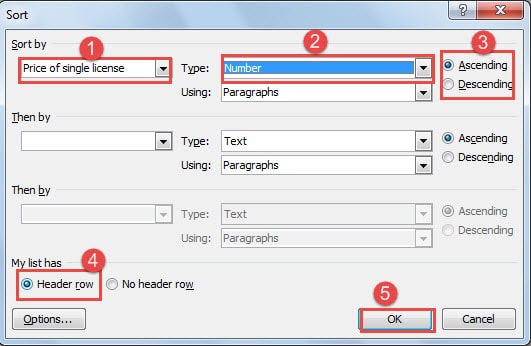
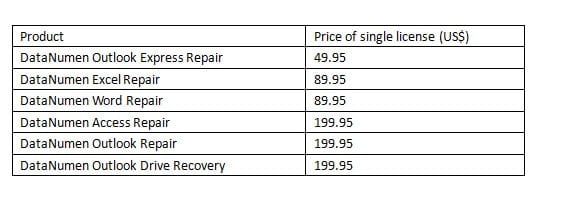
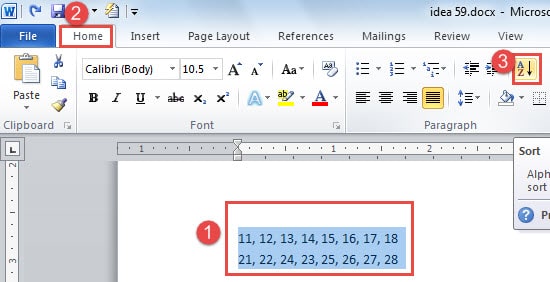
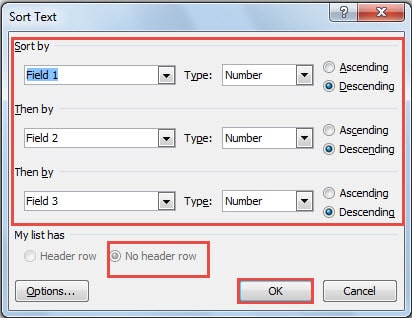
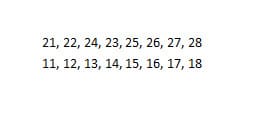






















 How to insert a page number (c) Screenshot
How to insert a page number (c) Screenshot Change the “start at” page number to whatever number you like (c) Screenshot
Change the “start at” page number to whatever number you like (c) Screenshot